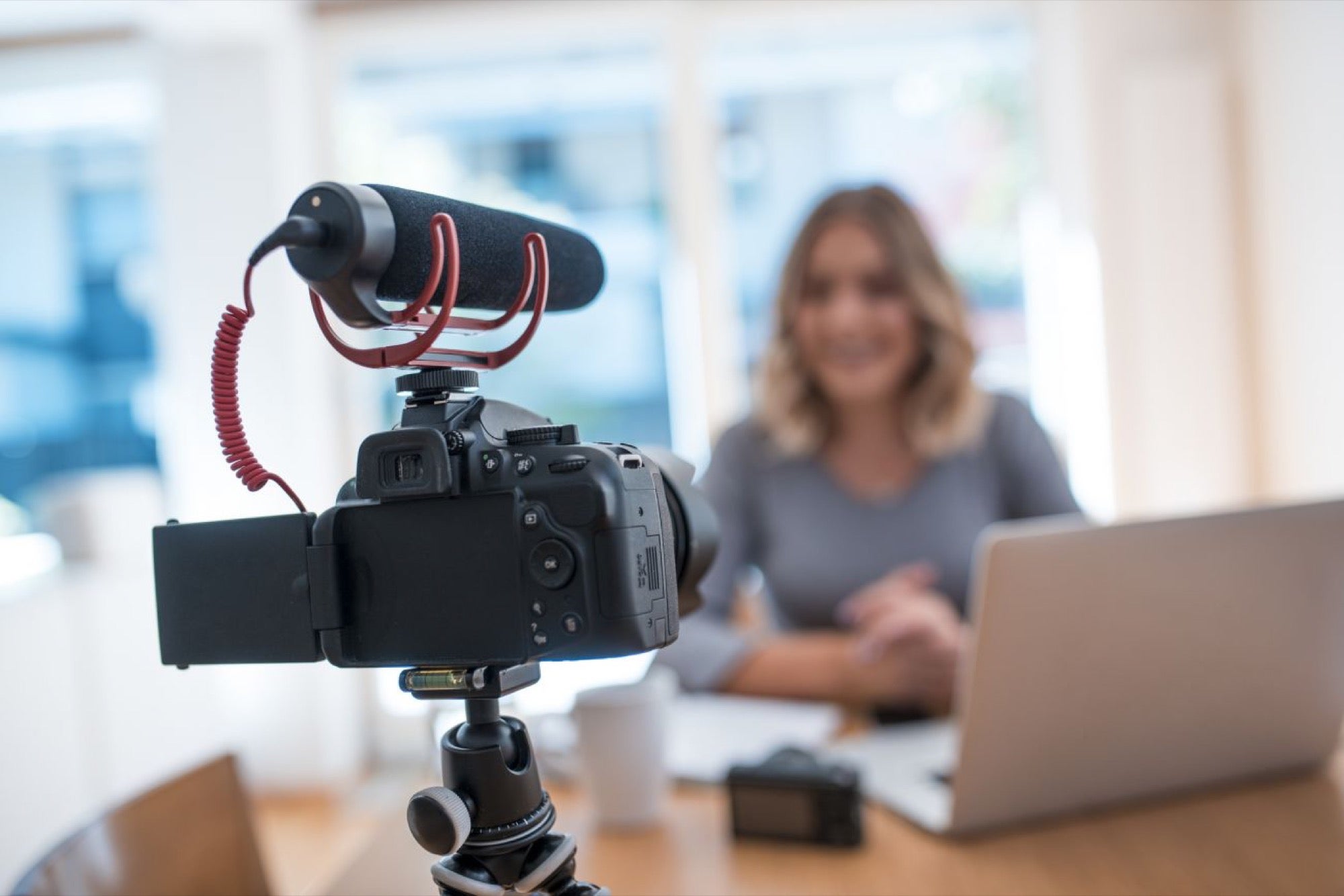Realistic Ways To Cure Your Fear Of Video Marketing
Realistic Ways To Cure Your Fear Of Video Marketing

In today’s digital landscape, video marketing has emerged as a powerful tool for businesses and content creators alike. With the popularity of platforms like YouTube, Instagram, TikTok, and Facebook, integrating video content into your marketing strategy is no longer optional; it’s essential. However, many individuals and businesses find themselves paralyzed by the fear of putting themselves in front of the camera. This fear—often termed “video anxiety” or “camera shyness”—is common, but it can be overcome with the right strategies and mindset. This article explores realistic ways to cure your fear of video marketing, empowering you to harness the full potential of video content.
Understanding Your Fear of Video Marketing
Before we dive into the solutions, it’s crucial to understand the root causes of your fear related to video marketing. Common reasons for this anxiety include:
- Fear of Judgement: The fear of being criticized by others can be overwhelming, causing you to avoid video content altogether.
- Perfectionism: Many people hesitate to produce videos unless they believe they can create the “perfect” product. This need for perfection can lead to procrastination.
- Lack of Experience: Without prior experience, the thought of being on camera can feel daunting. You may worry about stuttering, forgetting lines, or looking awkward.
- Comparison: Seeing polished videos from others can leave you feeling inadequate, leading to a reluctance to create your own content.
- Technical Anxiety: The thought of managing video equipment, editing software, and other technical aspects can be intimidating.
Recognizing these fears is the first step toward overcoming them. Understanding that you are not alone in this experience can also be reassuring.
1. Start Small
One of the most effective ways to tackle your fear of video marketing is to start small. Rather than diving headfirst into a lengthy, scripted video, begin with short, simple videos.
Suggested Steps:
- Create 15-Second Videos: Use platforms like Instagram Stories or TikTok to record brief videos. These formats allow you to practice without a significant time commitment.
- Experiment with Different Formats: Try to record yourself talking about a hobby, sharing a quick tip, or doing a live Q&A. The aim is to get comfortable with being on camera.
- Focus on One Key Message: Instead of preparing a complete presentation, identify a single key point you want to share in each video. This focused approach can make it less intimidating.
2. Embrace the Imperfection
Perfectionism can be a major barrier to producing video content. It’s essential to acknowledge that perfection is unattainable, and embracing imperfection can be liberating.
Suggested Steps:
- Accept Mistakes: Remind yourself that everyone makes mistakes. Many successful content creators intentionally include bloopers in their videos to show their authentic selves.
- Limit Editing: While it’s tempting to edit out every flaw, consider leaving in some imperfections to make your videos feel more genuine and relatable.
- Practice Self-Compassion: Be kind to yourself. When things don’t go as planned, treat yourself the same way you would treat a friend facing a challenge.
3. Know Your Audience
Understanding your audience can help alleviate some of the fear associated with creating video content. When you know who you’re speaking to, you’ll feel more confident and focused.
Suggested Steps:
- Research Your Audience: Use surveys or social media polls to understand your audience’s interests, preferences, and what they want to see from you in videos.
- Engage with Your Audience: Commenting on your posts, replying to messages, and engaging with your audience help you build a connection. When you feel connected to your audience, it’s easier to produce relatable content.
- Visualize Success: Picture a positive interaction with your audience. Imagine them enjoying your content and engaging with it positively.
4. Practice Makes Perfect
Much like any other skill, becoming comfortable on camera takes practice. The more you practice, the more confident and skilled you’ll become.
Suggested Steps:
- Daily Video Challenges: Set aside a few minutes every day to record yourself. Over time, you will become more accustomed to speaking on camera.
- Join a Toastmasters Club: Such clubs offer practice in public speaking, building your confidence in articulating your thoughts, and naturally transitioning to video.
- Record Yourself Daily: You don’t need to post every video you record. Use them as practice sessions to improve your presence.
5. Utilize Technology to Your Advantage
Many tools and technologies can help alleviate some of the heaviness of video production and allow you to create content more efficiently.
Suggested Steps:
- Screen Recording Software: If appearing on camera feels overwhelming, consider creating screen recordings where you present information via slides or demonstrations.
- Teleprompter Apps: If you struggle with memorization or staying on track, using a teleprompter app can help you maintain your flow of thought.
- Editing Tools: Familiarize yourself with editing software like iMovie or Adobe Premiere Pro. Editing provides an avenue for you to refine your videos, allowing you to feel more prepared before publishing.
6. Create a Comfortable Environment
Your surroundings can significantly influence your comfort on camera. By creating a welcoming and relaxing video environment, you’re more likely to feel at ease.
Suggested Steps:
- Designate a Filming Space: Choose a comfortable, quiet spot in your home or office that’s free from distractions. Personalize it with items that make you feel relaxed.
- Invest in Lighting and Sound Equipment: Good lighting and sound can significantly enhance your video quality, making you feel more professional. This minor investment can boost your confidence.
- Dress Comfortably: Wear clothing that makes you feel good about yourself so you can focus more on your content and less on how you look.
7. Seek Feedback and Make Adjustments
Receiving feedback is crucial for growth. Understanding how others perceive your videos can help you make necessary adjustments.
Suggested Steps:
- Share with Trusted Friends or Family: Before posting to a wider audience, share your videos with people you trust and ask for their feedback.
- Implement Changes: Use constructive criticism to enhance your videos. Even small adjustments can make a significant difference.
- Gradually Expand Your Audience: Once you feel more comfortable, start by sharing your videos with a small, supportive audience before posting publicly.
8. Watch and Learn from Others
Study successful video creators to learn what works well in video marketing. Observing others helps you identify techniques that resonate with your audience while enhancing your skills.
Suggested Steps:
- Analyze Your Favorite Creators: Take note of their presentation styles, video structures, and how they engage with their audiences.
- Participate in Webinars: Many experts offer free webinars where they discuss their video strategies. These sessions can provide you with valuable tips.
- Emulate, Then Innovate: Start by emulating styles you appreciate. Over time, develop your unique voice and presentation style.
9. Build a Content Strategy
Having a clear content strategy can help mitigate fear by giving your videos purpose. When you have a plan, the focus shifts from fear to execution.
Suggested Steps:
- Identify Your Goals: What do you want to achieve with your videos? Whether it’s building your brand, gaining subscribers, or increasing traffic to your website, clarity will help you stay focused.
- Create a Content Calendar: Plan your video topics in advance and stick to a schedule. Knowing what you’re going to talk about can ease a lot of anxiety.
- Incorporate Variety: Mix in different types of content, such as tutorials, behind-the-scenes glimpses, interviews, or customer testimonials. This variety keeps your content fresh and engaging.
10. Mindfulness and Breathing Techniques
It’s natural to feel anxious before filming. Utilizing mindfulness and relaxation techniques can help center your thoughts and manage anxiety effectively.
Suggested Steps:
- Practice Deep Breathing: Before hitting record, take a few moments to practice deep breathing. Breathe in deeply through your nose, hold for a few seconds, and exhale slowly.
- Visualize a Successful Recording: Picture yourself calmly presenting your content and receiving positive feedback. This positive mental imagery can help reduce anxiety.
- Grounding Techniques: Engage in grounding exercises like feeling your feet on the ground or focusing on your surroundings to calm your nerves before filming.
11. Emphasize Authenticity
In a world saturated with perfect video content, authenticity stands out. Presenting your true self can enhance relatability, helping you connect with your audience.
Suggested Steps:
- Share Personal Stories: Consider sharing anecdotes or experiences that have shaped your journey. This can humanize your brand and create deeper connections.
- Be Yourself: Avoid trying to mimic others. Showcase your personality and quirks; this uniqueness will be your strength.
- Engage with Your Audience: Encourage viewers to leave comments or ask questions. Engaging with your audience can create a sense of community.
12. Celebrate Small Wins
Every step you take toward overcoming your fear is a victory, no matter how small. Acknowledging these achievements can motivate you to keep going.
Suggested Steps:
- Set Realistic Goals: Break down your video marketing journey into smaller milestones, and celebrate when you hit each one.
- Keep a Progress Journal: Track your progress, noting each video you create and any positive feedback you receive. Reflecting on your growth can be a powerful motivator.
- Reward Yourself: Treat yourself when you accomplish a goal. Whether it’s a cup of coffee from your favorite café or a new book, having something to look forward to can boost morale.
Conclusion
Overcoming the fear of video marketing may not happen overnight, but with willingness and practice, you can become a confident on-camera presence. Start small, embrace imperfections, know your audience, and develop a strategy that works for you.
In a world increasingly driven by video content, pushing through your anxieties can lead to rewarding marketing success and meaningful connections with your audience. By applying the realistic strategies outlined here, you’re not only investing in your confidence but also in the growth and evolution of your brand. Embrace the journey, celebrate every success, and remember that even the most seasoned videographers had to start somewhere. Your moment on camera awaits—embrace it!









